If you think the cost of gassing up your car is outrageous, wait until you need to restock your pantry.
The price of wheat has more than tripled during the past 10 months, making Americans' daily bread -- and bagels and pizza and pasta -- feel a little like luxury items. And baked goods aren't the only ones getting more expensive: Experts expect some 80 percent of grocery prices will spike, too, and could remain steep for years because wheat and other grains are used to feed cattle, poultry and dairy cows.
"It's going to affect everything ... impact on every section of the grocery store," said Michael Bittel, senior vice president of King Arthur Flour Co. in Norwich, Vt.
.....
The wheat market has been pushed higher by a combination of agricultural, financial and energy issues.
Poor wheat harvests in Australia and parts of Europe and the U.S. have caused China and other Asian countries to buy up more American crops, which are especially attractive because of the weak U.S. dollar.
At the same time, the American crop is shrinking because of federal incentives to grow corn for ethanol. And skyrocketing gas prices make it costlier to get any wheat to market. Those same pressures have also made it more expensive to supply feed grains for livestock.
.....
Wheat historically trades at $3 to $7 a bushel.
But this week, futures of spring wheat -- which produces the flour used in hearth breads, rolls, croissants, bagels and pizza crust -- were close to $18 a bushel on the Minneapolis Grain Exchange. They climbed as high as $24 in late February.
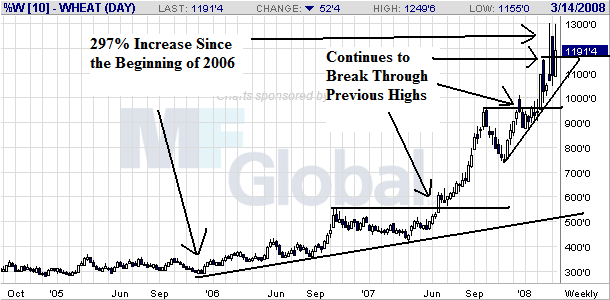
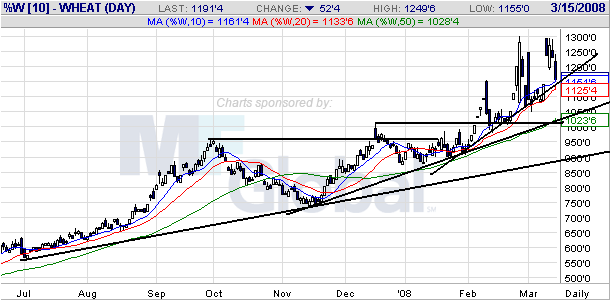
From the AP:
The rally in energy prices gained momentum Friday, with retail gas prices rising further into record territory and diesel and heating oil futures setting records of their own amid concerns about strong global demand and tight supplies.
Crude oil prices fell modestly as a sharp downturn in the stock market and worries about the economy prompted some profit-taking. But with the Federal Reserve expected to cut interest rates again next week, analysts expect the dollar to weaken further, propelling crude to new records.
At the pump, gas prices set records for the fourth straight day, rising 1.3 cents Friday to a national average price of $3.28 a gallon, according to AAA and the Oil Price Information Service. Average prices are nearing $4 in some parts of Hawaii.
Diesel, meanwhile, rose 2.9 cents to a new record national average of $3.938 a gallon. Heating oil, a fellow distillate and close cousin of diesel, jumped to new records on the New York Mercantile Exchange.
Diesel, used by trucks, trains and ships, is used to move the vast majority of the world's goods. While the U.S. economy appears to be slowing, the global economy continues to grow.
"Demand for diesel worldwide has been incredible," said Phil Flynn, an analyst at Alaron Trading Corp., in Chicago.
April heating oil futures rose 2.17 cents to settle at a record $3.1465 a gallon after earlier setting a new trading record of $3.222 a gallon.
From This Week in Petroleum:
Gasoline prices rose in all regions of the country, with the U.S. average retail price reaching its highest point in history, 322.5 cents per gallon. That was an increase of 6.3 cents from the previous week and 66.6 cents more than the price a year ago. Prices on the East Coast increased by 2.6 cents to 319.4 cents per gallon, 66.1 cents per gallon more than the price last year. Once again, the average price in the Lower Atlantic was at an all-time high increasing by 3.1 cents, to 320.8 cents per gallon. Unlike last week when the Midwest was the only region of the country where the average price was unchanged, this week the price there surged by 11.1 cents to 319.1 cents per gallon, up by 70.4 cents per gallon from a year ago. The Gulf Coast average gasoline price shot up by 4.3 cents to 313.1 cents per gallon, the highest price in history for the region and 3.9 cents per gallon above the previous record reached May 21, 2007. Although the price in the Rocky Mountains increased by 2.1 cents, to 310.9 cents per gallon, the average price there was the lowest of any region. The average price on the West Coast remained the highest of any region in the country, jumping 7.1 cents to a reach a new all-time high for the second week in a row. The average price of 345.7 cents per gallon was 53.7 cents higher than a year ago. In California, the average price for regular grade jumped by 7.8 cents to 353.7 cents per gallon. While this was just 46.9 cents above the price a year ago, it surpassed the previous all-time high price set May 7, 2007 by 7.6 cents.
For the fourth week in a row, the U.S. average retail diesel price continued its rapid rise surging up by 16.1 cents to 381.9 cents per gallon, and reaching an all-time high for the third consecutive week. The price was 113.4 cents above the price a year ago. On a regional basis, prices remained at all-time high levels in all regions of the country. On the East Coast, the average price shot up 17.0 cents to 387.0 cents per gallon, 120.1 cents per gallon above last year. In the Midwest, the price jumped by 14.5 cents to 378.4 cents per gallon, up by 111.1 cents from a year ago. The price in the Gulf Coast surged, shooting up by 18.9, to reach 379.8 cents per gallon, the largest increase of any region. Once again, the average price in the Rocky Mountains remained the lowest of any region. Nonetheless, the price there jumped up to 373.2 cents per gallon, an increase of 15.9 cents, 99.6 cents per gallon above last year. On the West Coast, the average price shot up by 14.9 cents to 388.5 cents per gallon, 107.4 cents above the price a year ago. The average price in California grew by 15.2 cents to 395.5 cents per gallon, 105.6 cents higher than last year.
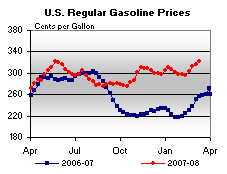
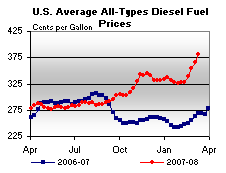

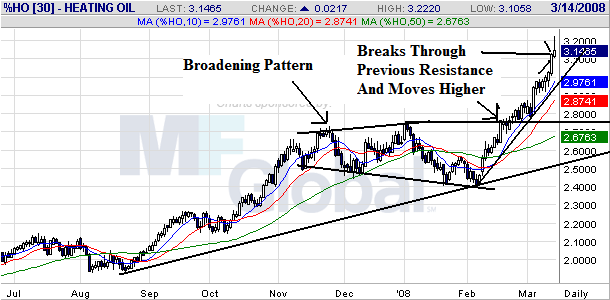
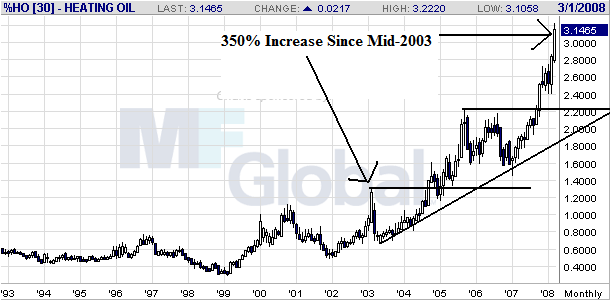
This week the Federal Reserve is widely expected to lower interest rates again. This will have a negative impact on the dollar's level which is already depressed. Expect more price spikes in any commodity priced in dollars.